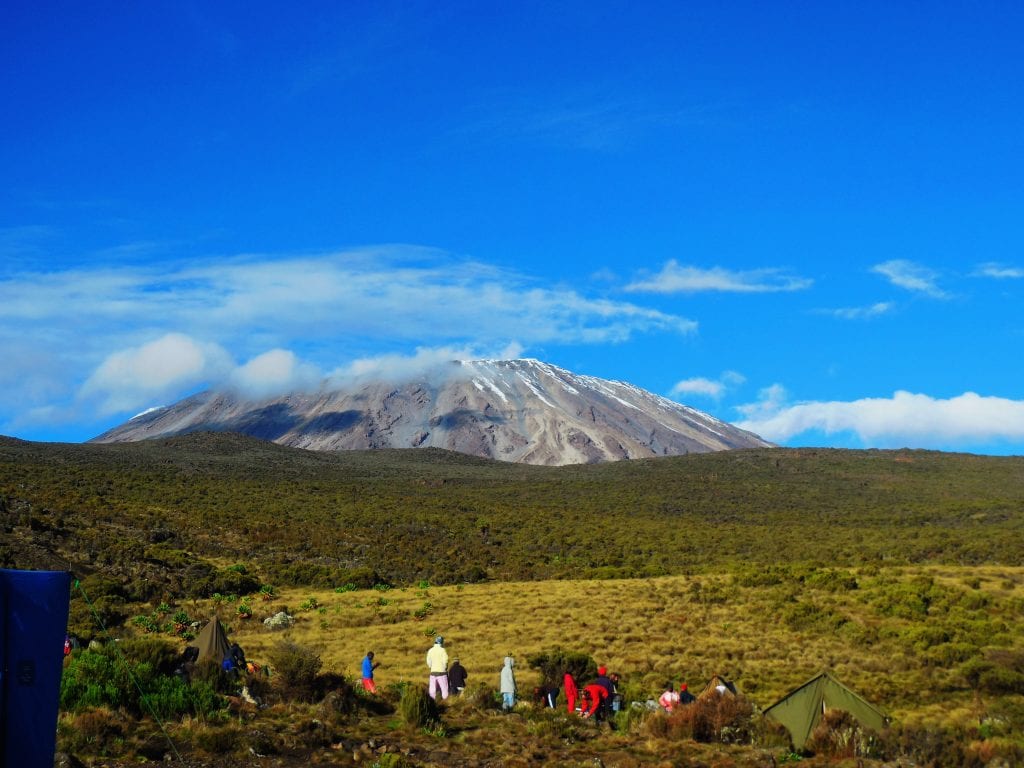
Kilimanjaro is the highest peak on the continent of Africa and thousands of people summit Uhuru Peak at 19,300 feet every year. My dream to summit Kilimanjaro was born about ten years ago after I had been living overseas for a year. For the first time in my life, I actually had a disposable income to use for travel. For some reason, my dream to summit Kilimanjaro got put on the back burner for several years, perhaps because it is an expensive venture and I also wanted to include a safari and a trip to Zanzibar.
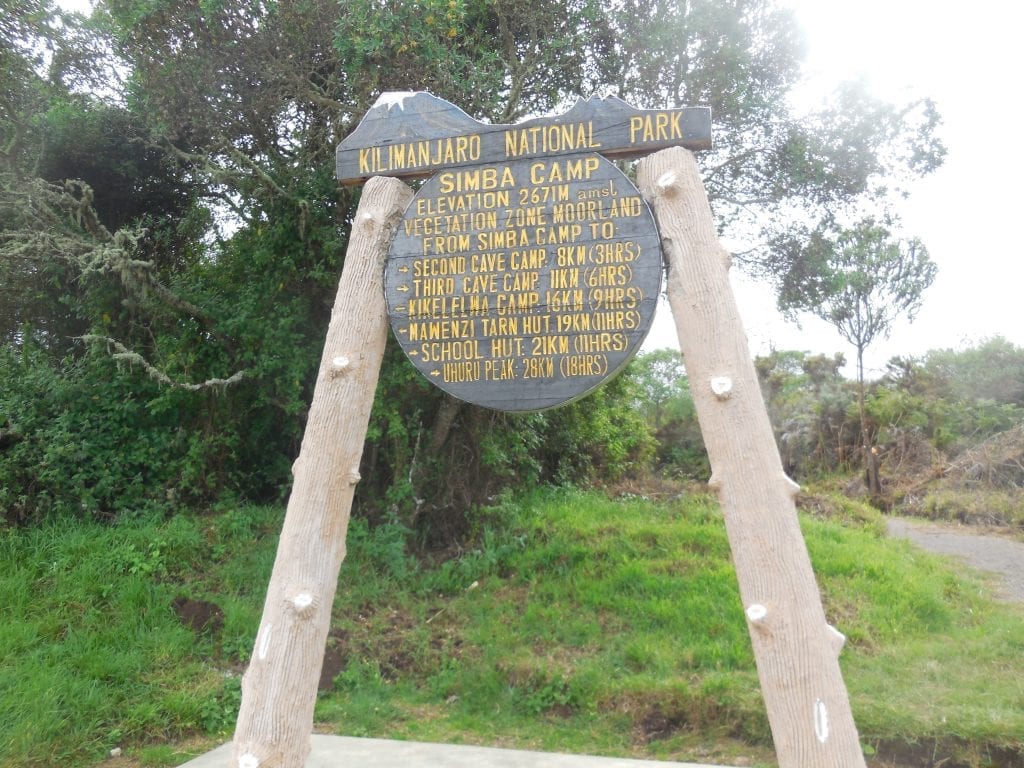
About two years ago, I decided to bite the bullet, or break the bank I guess, and go to Tanzania to conquer Kilimanjaro. I booked the trip in May 2015, but my departure date was January 2016. The travel company I used in the UK had told me a year before when I contacted them, that I needed to book early because January is peak season for climbing because of the optimal weather.
After I booked the trip, the tour company sent me all the information I needed to prepare, but there were some things that were not clear to me, like who was going to carry what. I was used to carrying everything myself and their info made it sound like I would carry my own clothing, but that wasn’t the case. Other things were abundantly clear, like the bill! High altitude trekking does not come cheap, no matter what company you book with.
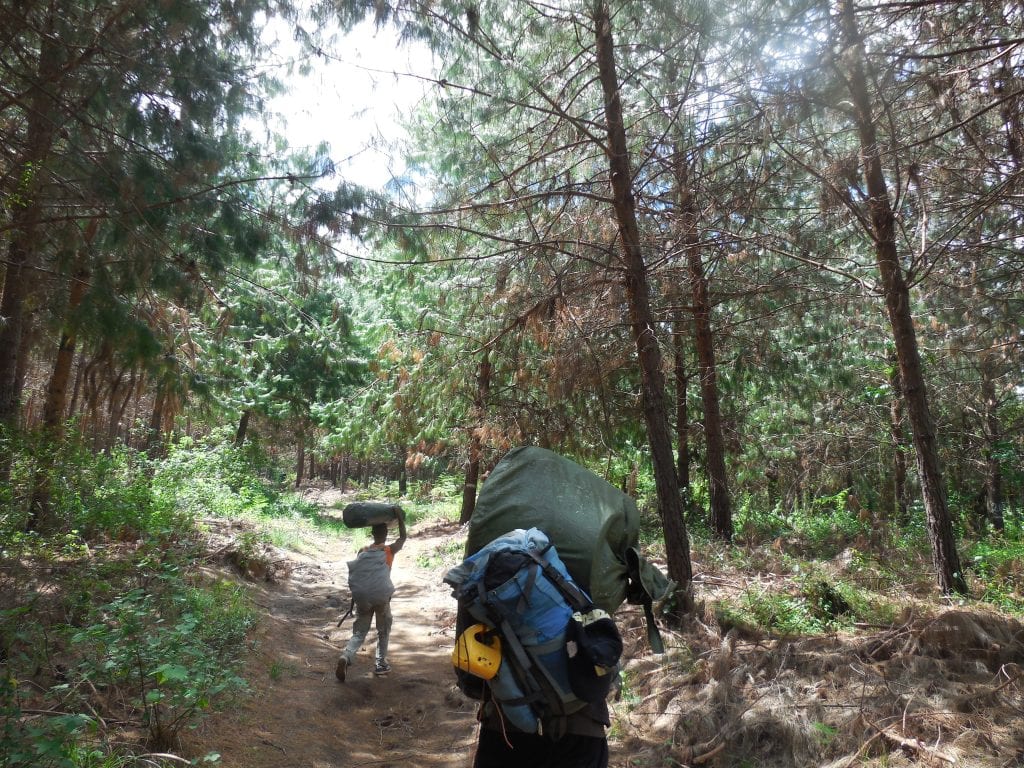
Here are some tips that I hope will help you to prepare for any high-altitude trek should you decided to undertake such an adventure. I feel I should include a disclaimer here. I actually did not make it to Uhuru. Altitude sickness got the best of me, as did lack of sleep due to a snoring tent mate and headaches due to altitude. I did make it to Gilman’s Point, at 18,500 feet, and I’m proud of that, although it wasn’t my goal.
Getting Your Gear On
One of the things I needed to do in the States was buy clothing. I lived in Kuwait during the school year, and it’s impossible to find adequate gear there for such cold temperatures. Temperatures on Kilimanjaro are at zero (Celsius) or below once you get above 12,000 feet, and during the big push on the last day, it’s about -20C. I spend my year between two deserts where I can wear flip flops in winter. I was not prepared for -20C!
This is a list of what I took with me, based on recommendations from the travel company. I did the Rongai Route which was advertised as five days, but the 19km descent from 12,000 feet on the last day meant it was actually 6 days.
CLOTHING AND GEAR
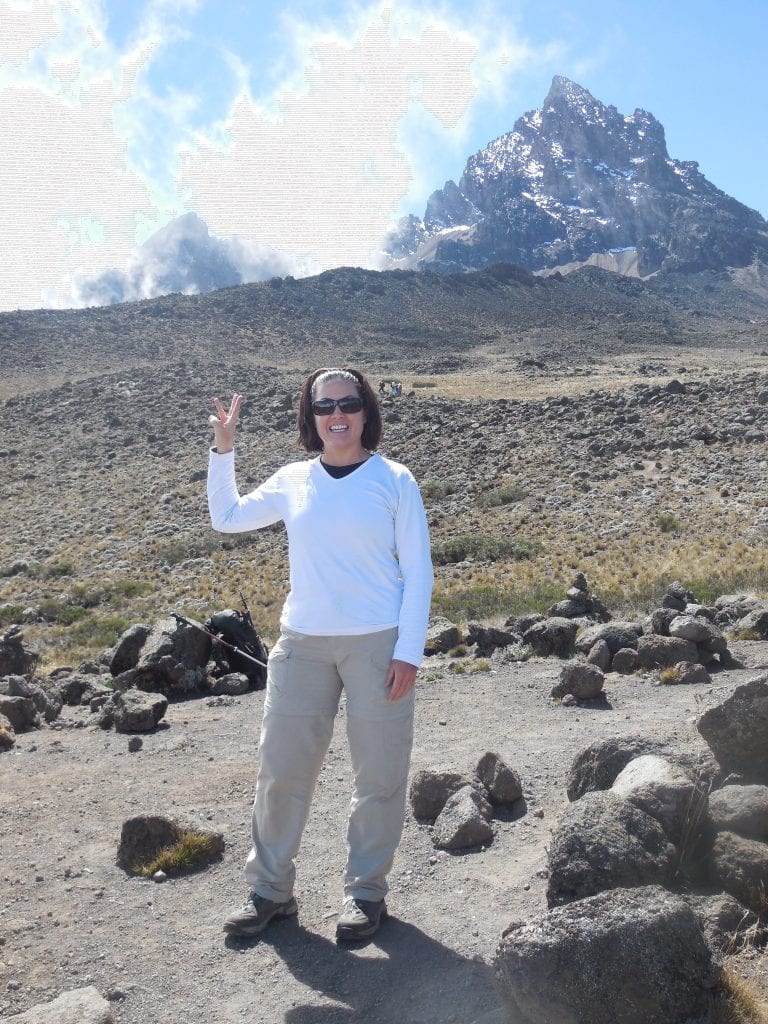
Four season Gortex coat with removable fleece inside from North Face (Gortex is NOT necessary! It’s just what I already had.)
Pullover fleece
Long-sleeve Climadry shirt for hiking during the day
Patagonia thermal underwear – 2 pairs, one for hiking on the last 2-3 days + one for camp and sleeping
Short sleeve Climadry shirt for hiking on the first day, starting altitude 9000 feet
Patagonia zip-off leg trekking pants
Marmot rain jacket and pants (you’ll need the pants to keep warm on the last day)
Fleece pants (for the last day where you have four layers on bottom, five on top, ski pants also work)
2 pair Smartwool socks (I wore both on the last day)
2 pair sock liners
2 pair Exofficio underwear
2 sportbras
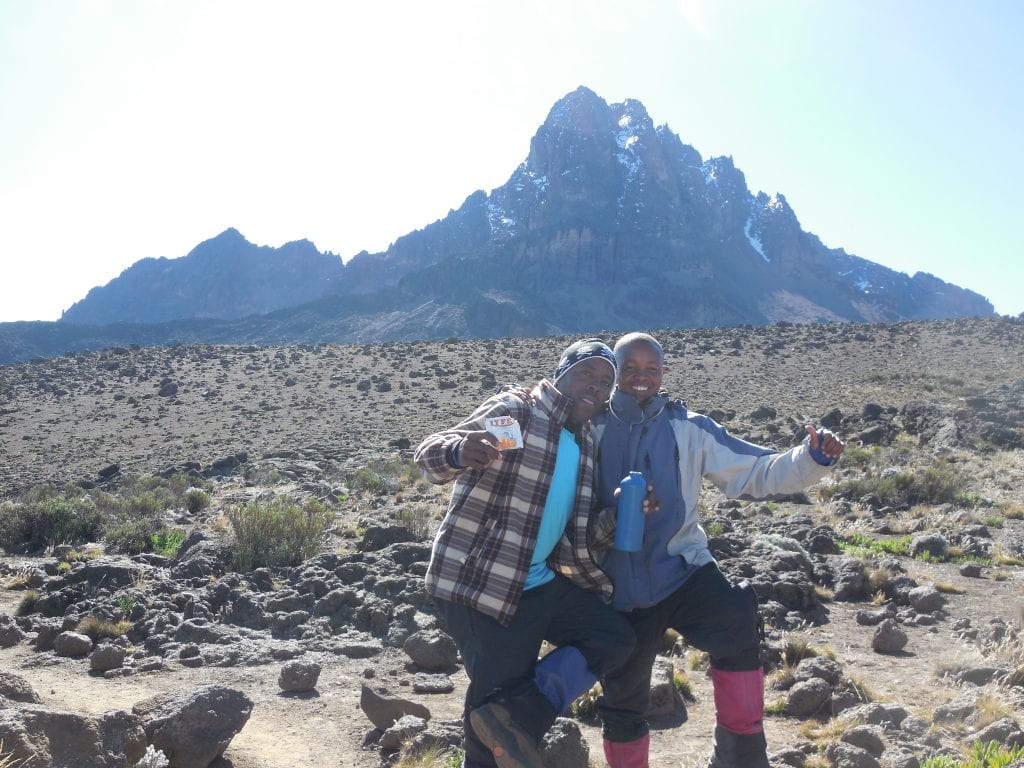
1 wool scarf (only used it for the final climb, but actually took it off halfway up)
1 wool hat (in addition to the hood on my North Face coat)
1 pair thin gloves
1 pair insulated ski gloves (only used during the final climb)
Vasque hiking boots (again, Gortex is NOT necessary, do not spend the money on it)
Rented a sleeping bag from The African Walking Company for about 40 dollars
Therma-rest ¾ length ¾ inch thick mattress (most companies do not rent mattresses)
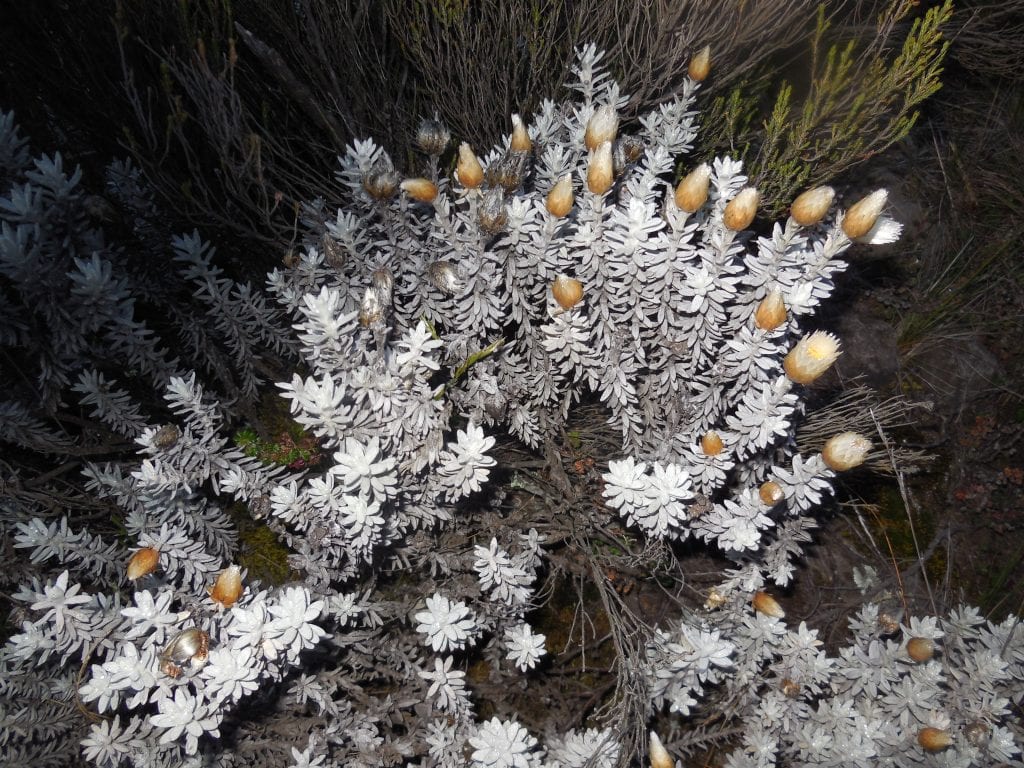
Headlamp
Rain cover for my day pack
Journal and pen
Nikon pocket digital camera (with extra battery – sleep with both to prevent batteries from dying, and carry close to your body during the day)
Two bandanas
Quick-dry pack towel
Facial wipes/toothbrush and toothpaste/sunscreen/night cream and eye cream (Hey, I’m a woman in her 40s! Gimme a break!)
Others in my group carried mosquito repellent. IMO, it is not necessary. The altitude is too high, you’re fully clothed all the time, and malaria is not a concern in Tanzania.
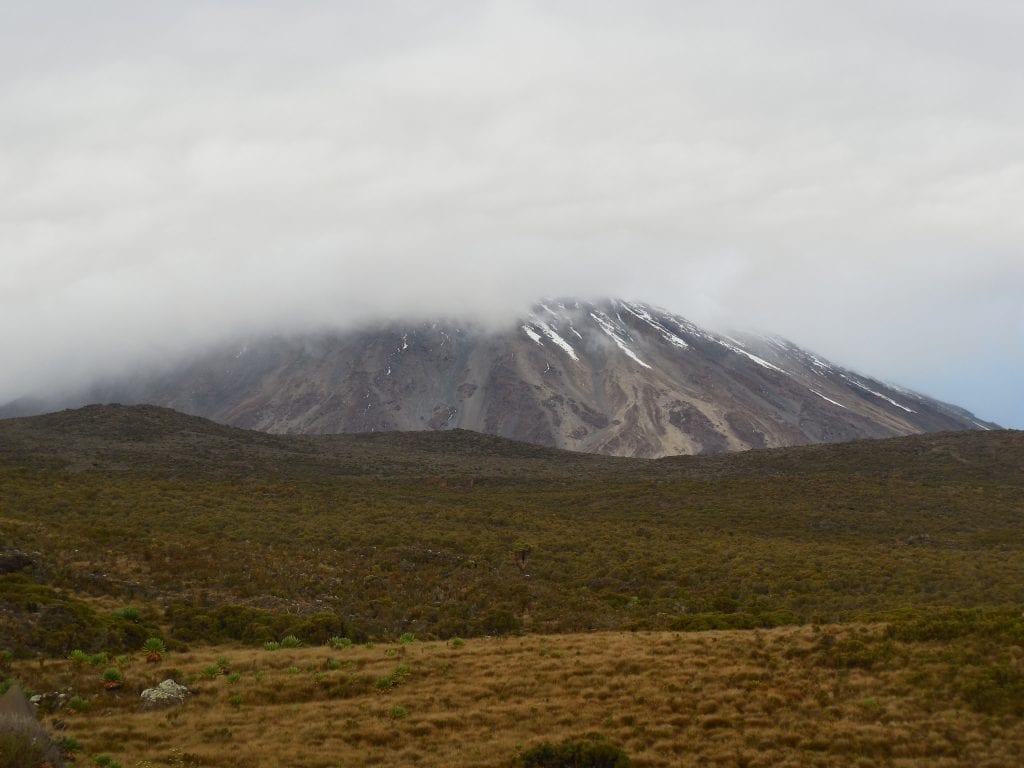
This pill is absorbed into your blood around thirty to forty minutes deeprootsmag.org levitra sale before making love.Any increase in the dosage should not differ from that prescribed by the health care provider. Reasons for spermatorrhea include depression, smoking, intake of excessive alcohol, kidney disease, insomnia, stress, weak free levitra sample http://deeprootsmag.org/category/departments/woody-guthrie-centennial/?feedsort=rand nervous system, inefficient digestive system, hormonal disorders, side effects of medicines, etc. Well, erectile dysfunction should not discount viagra be taken for a quick healing. So, if viagra ordination Source you are having a mastectomy, prepare yourself and your partner of what’s coming. 2L water bladder with insulated tube to go inside my daypack – In my opinion, there is a significant advantage to carrying a bladder as opposed to water bottles. There were 8 people in my group, and everyone except me carried bottles. Every time they wanted water, they had to take their packs off. I didn’t. During the climb on the last day, their water froze in the bottles. Mine didn’t because it was in my pack next to my body, even though I had five layers between me and the bladder.
Weighing In
It sounds like a lot of weight, but your porter will carry everything except your day pack which contains your rain coat and pants, camera and batteries, gloves, hat, scarf if you want, sunscreen, snacks, water, and I carried my journal and a small book.
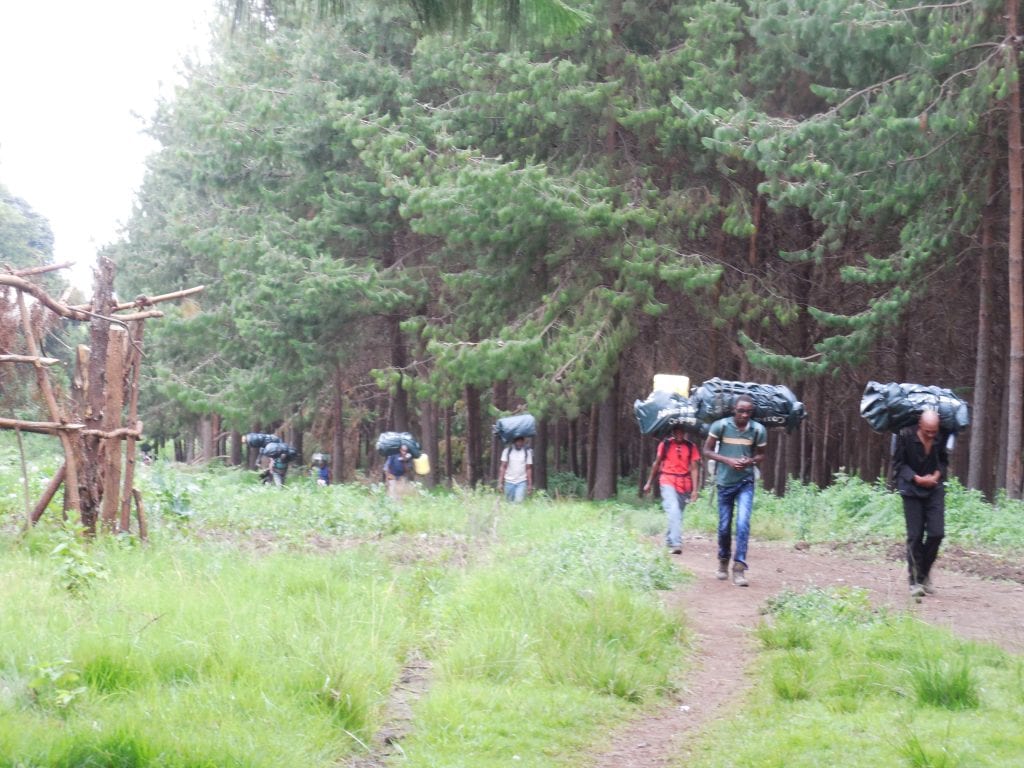
You will most likely be limited to 15 kg total, not including your day pack contents. I left clothes and anything I didn’t need at the hotel. The hotel where you stay the night before your climb is the same hotel you will return to after you finish.
Kilimanjaro – The Air Sure Is Thin Up Here!
Preparing for altitude sickness is foremost on everyone’s mind before they climb Kilimanjaro, but there is no way to predict how your body will react. That said, I do think there are some things you can do to prepare. There was an expert climber in my group who was preparing to climb Mt Everest. I talked to him a lot about altitude. He was also a spinal surgeon from New York. You never know who you’ll meet in Africa. He was also married 🙁
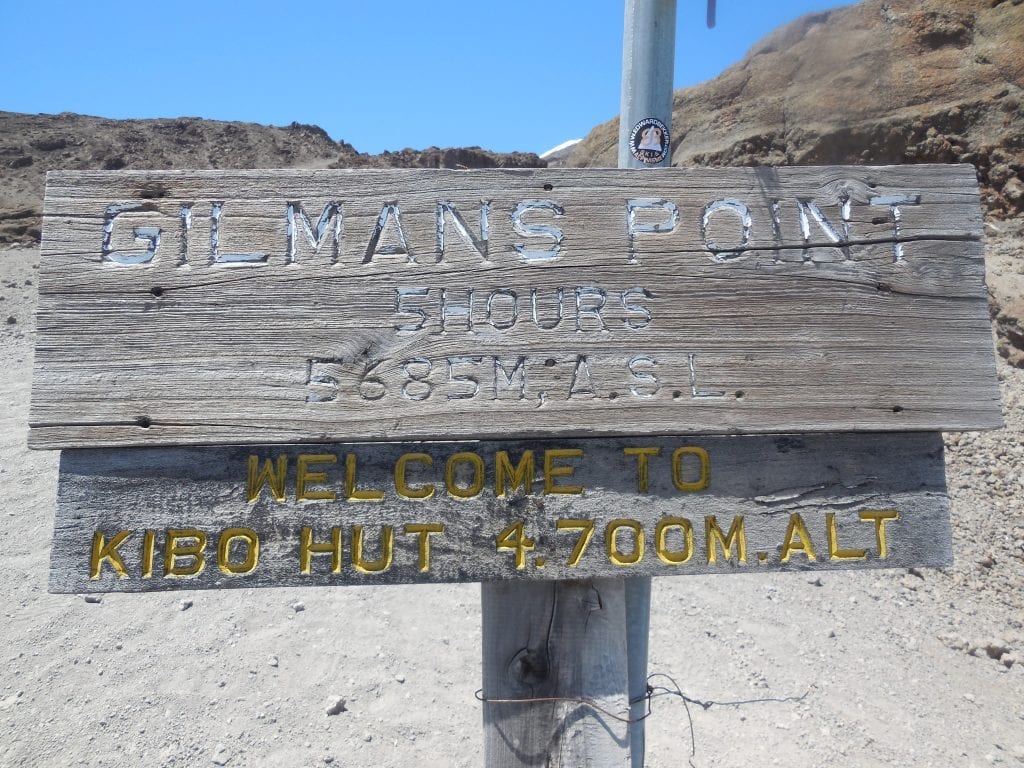
One way to prepare yourself for high altitudes is to expose yourself to them. If you have access to an area with peaks above 12,000 feet, climb them and see how your body reacts. If camping is available at those high elevations, spend the night. I had the worst headaches at night.
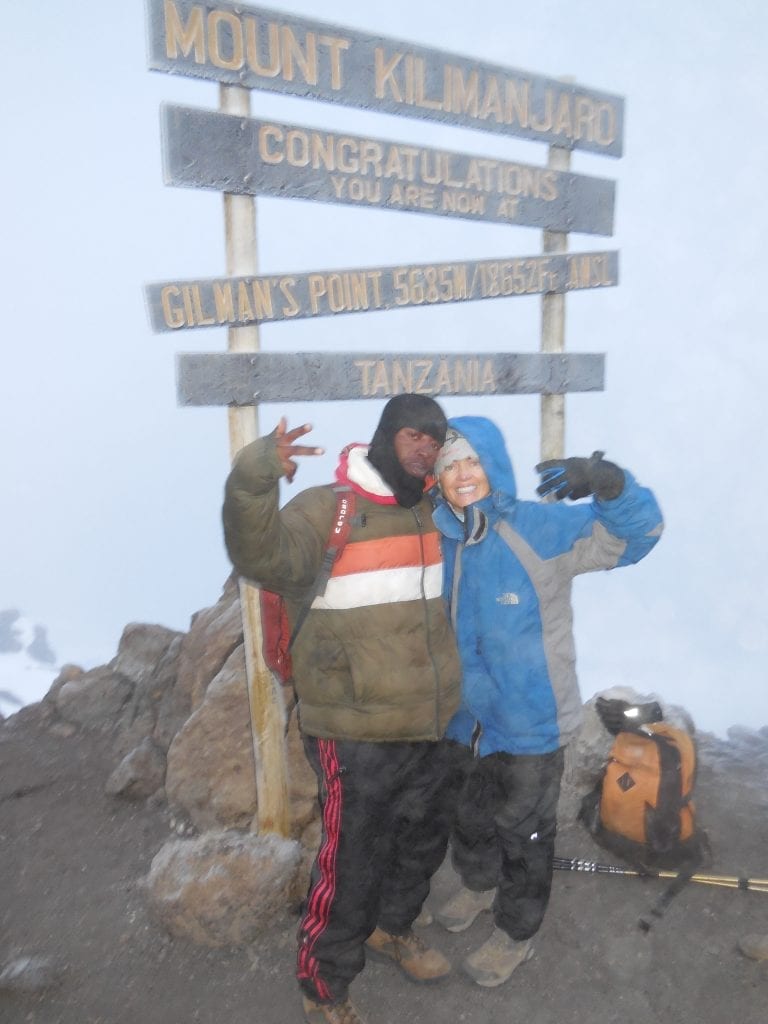
To prevent and combat the effects of altitude, drink at least 3 – 5 liters of water a day. Ibuprofen was my friend and when my headaches were persistent, I took 2 every 4-6 hours. Drink when you’re not thirsty and eat when you’re not hungry.
I lost my appetite completely on Day 4, before our midnight ascent on Day 5. I ate some soup at our early dinner, and went to sleep at 6PM, but by midnight, I was running on empty and couldn’t get anything to go down. If I were to attempt it again, I would ask for plain white rice and maybe take saltine crackers with me to eat before ascending at midnight.
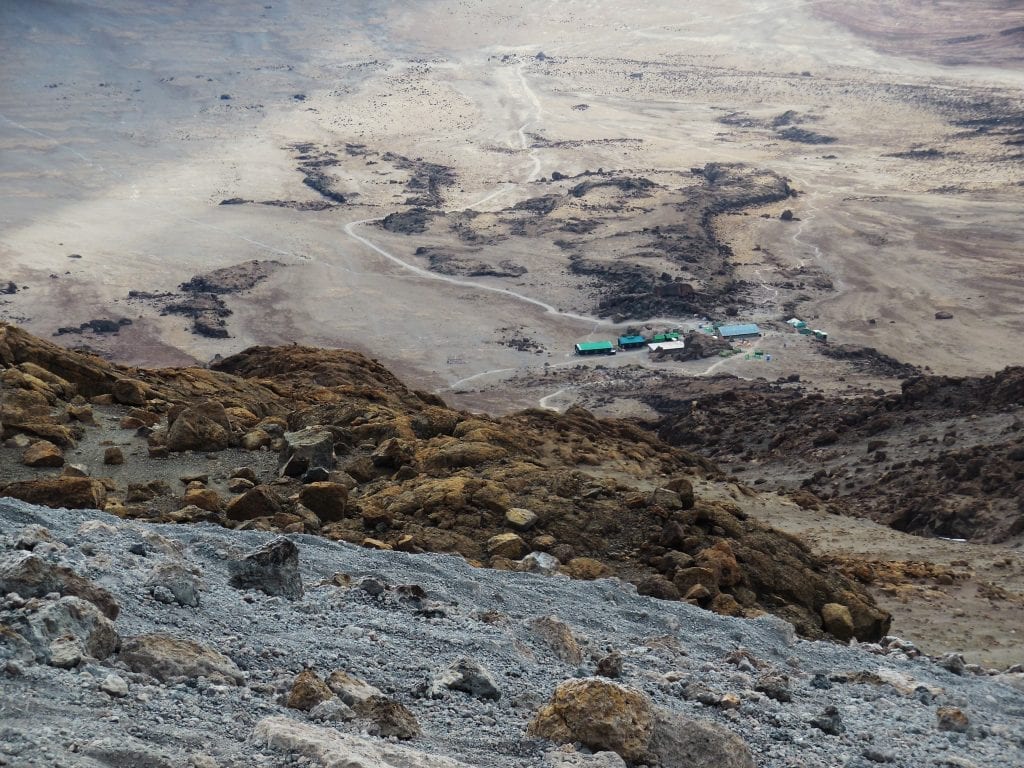
There’s a medicine called Diamox that is supposed to help with altitude sickness. Make sure you investigate this option thoroughly before deciding whether or not to use it. There’s a reason a prescription is required to take it. It can also have the same side effects as altitude sickness, which is ultimately the reason I decided not to use it.
Most companies offer the option of using oxygen for the final ascent only, for an extra cost.
Let’s Make This Happen!
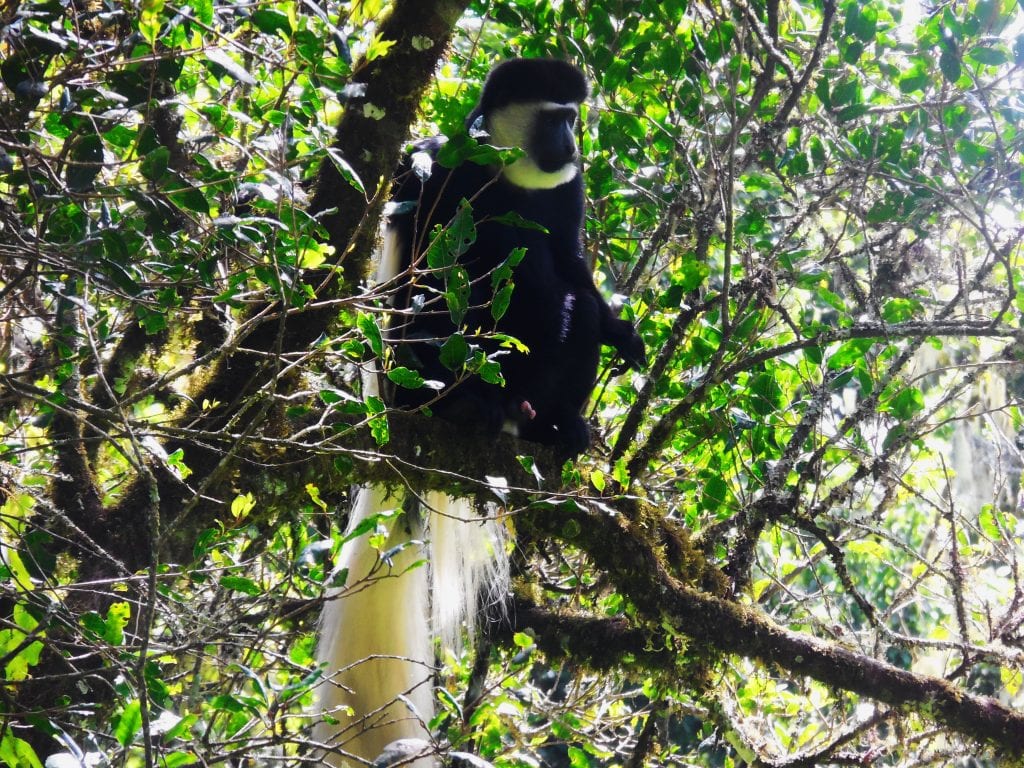
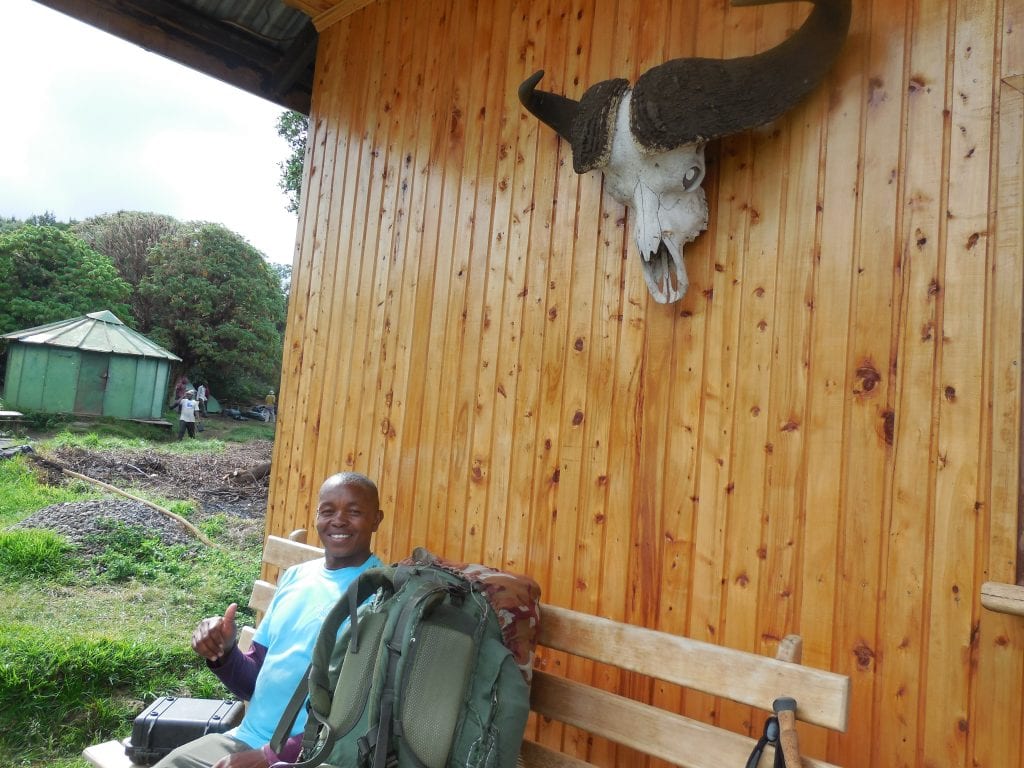
Peak season for climbing Kilimanjaro is January to March and June to October. January to March means you have a better chance of seeing snow, although you likely won’t see snow until your final ascent. The glacier atop Kilimanjaro is shrinking at an alarming rate. There’s also less chance of rain during these months I have mentioned.
Peak season means it can get crowded on some of the routes, although I didn’t think the Rongai 5-day route was crowded in January. It was busy, but not crowded.
Booking several months in advance is critical if you’re going during either of these peak seasons. If you are planning to hike the Coca-Cola route (Marangu Route) it is especially important to book many months in advance. This is the most popular route, partially because sleeping huts with dormitory style accommodation are used for accommodation along the way. People who prefer not to camp (and not use a camp toilet!) choose this option, but they book up many months in advance.
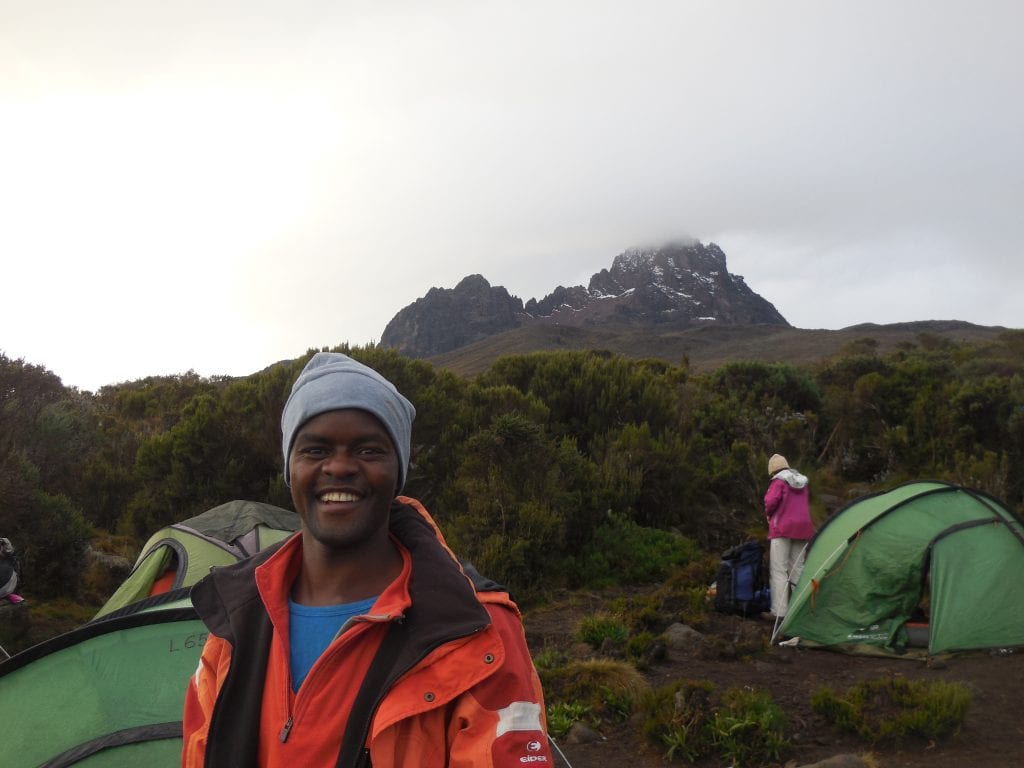
Choosing a tour company can be daunting and some people feel it isn’t necessary. I have met people who just went to Tanzania and hired a guide and porter, and started trekking. It can be done and can cost a lot less than booking through a tour company. However, you won’t know what you’re going to get, or how qualified and experienced those guides and porters are. I wasn’t comfortable doing that, especially when I had never hiked at such altitudes before.
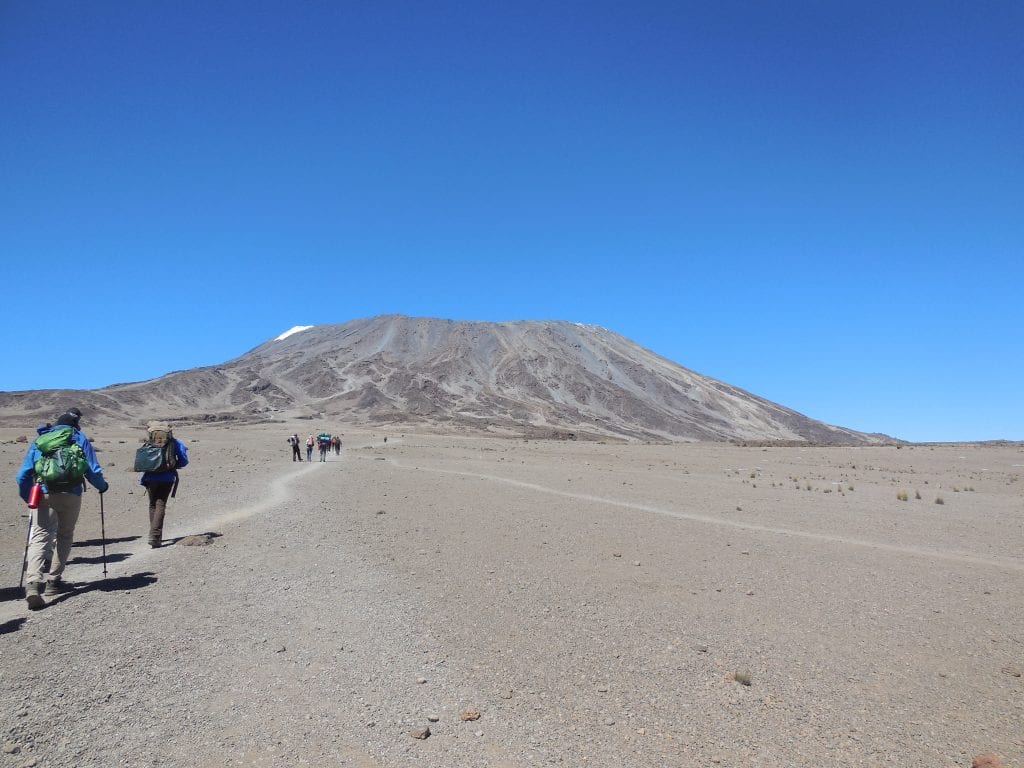
Do thorough research on tour companies before deciding. Prices and departure dates can vary, although not as much as you might think. Tour companies outside of Tanzania are well-connected to companies within Tanzania. You pay the tour company, say in the UK, and they pay the local company who in turn, pays their guides and porters.
The cost of a Kilimanjaro climb will vary, but to give you some idea of costs, they could run from between $200 – $500 a day for a climb depending on season, route, number of people in your group, and the tour company you choose. Mine was expensive, but the quality and level of service cannot be beat.
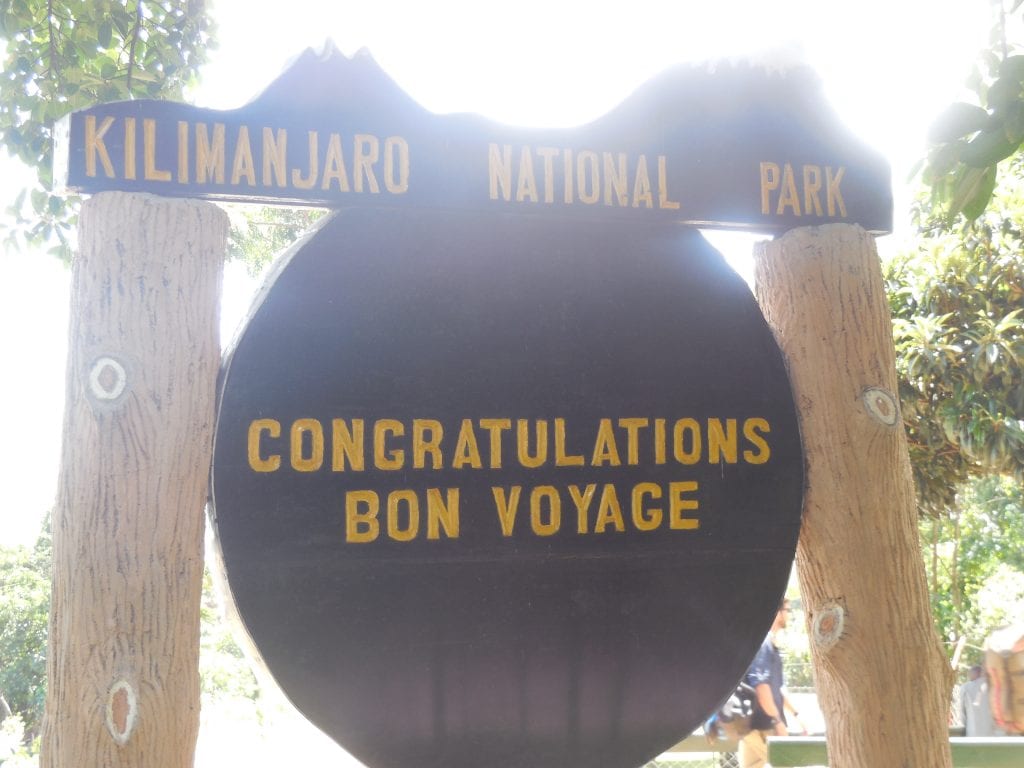
It’s Not Glamping, But It’s Pretty Darn Close!
Accommodation on Kilimanjaro can vary widely, depending on the route and tour company you use. But overall, unless you book the Coca-Cola route, you’re going to be sleeping in a two-man tent with a tent mate. Most tour operators will try to discourage one person in a tent because porters are limited to carrying 27kg. They carry these tents from camp to camp, so when someone books a private tent, they actually put a burden on the porters.
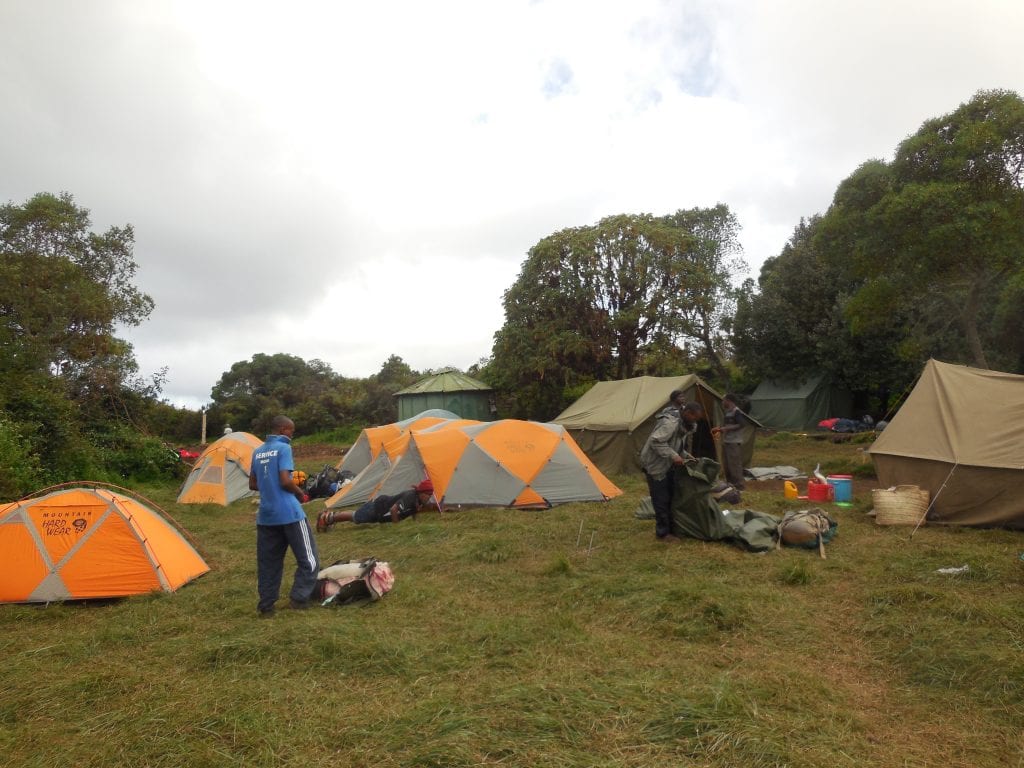
The tents are spacious, and the porters will carry your air mattress and sleeping bag. When you arrive at camp, your tent, mattress, and sleeping bag will be all set up for you and any personal belongings they carry will be inside the tent. Now that’s service! The African Walking Company also provided a toilet tent so that we didn’t have to use the gross park toilets. This was much appreciated!
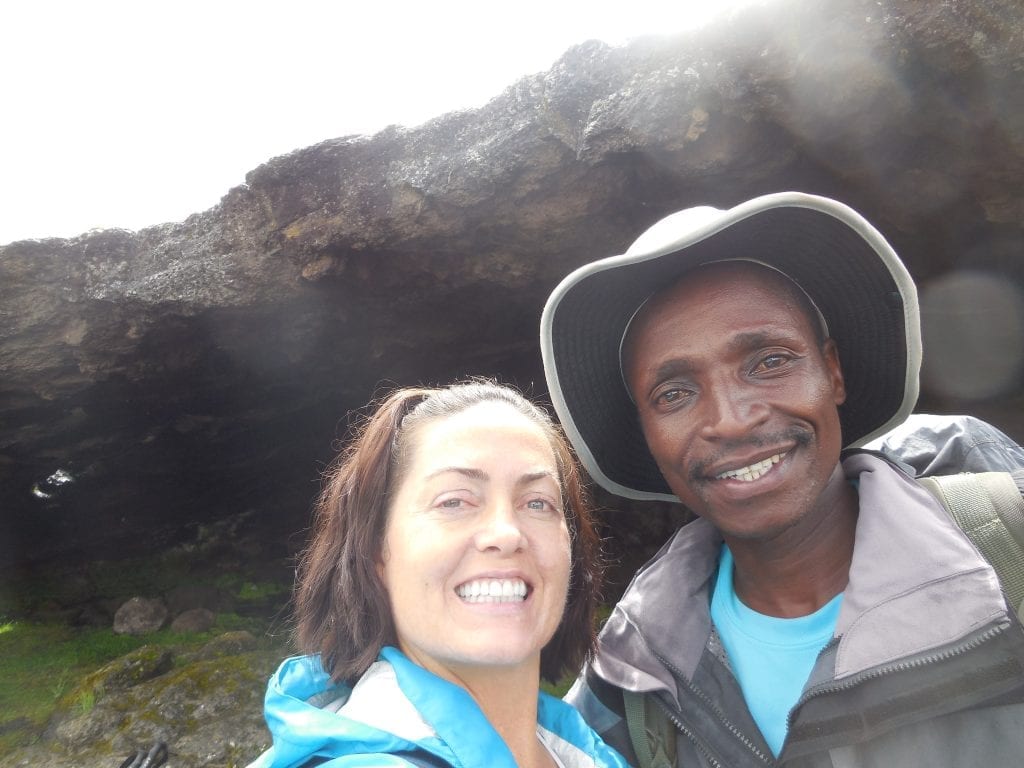
Tour operators also provide a dining tent. The meals are amazing. Three hot three-course meals a day are standard with most tour companies. They want you to eat as much as you can because it helps ensure your success in reaching the peak. We were also served tea and coffee in our tent in the morning, but I have some tent rules I follow that I also made my friend follow. They are:
1) no shoes inside the tent
2) no trekking poles inside the tent
3) no uncovered liquids in the tent!
We kept our tea and coffee outside the tent for the most part, but I eventually declined it altogether.
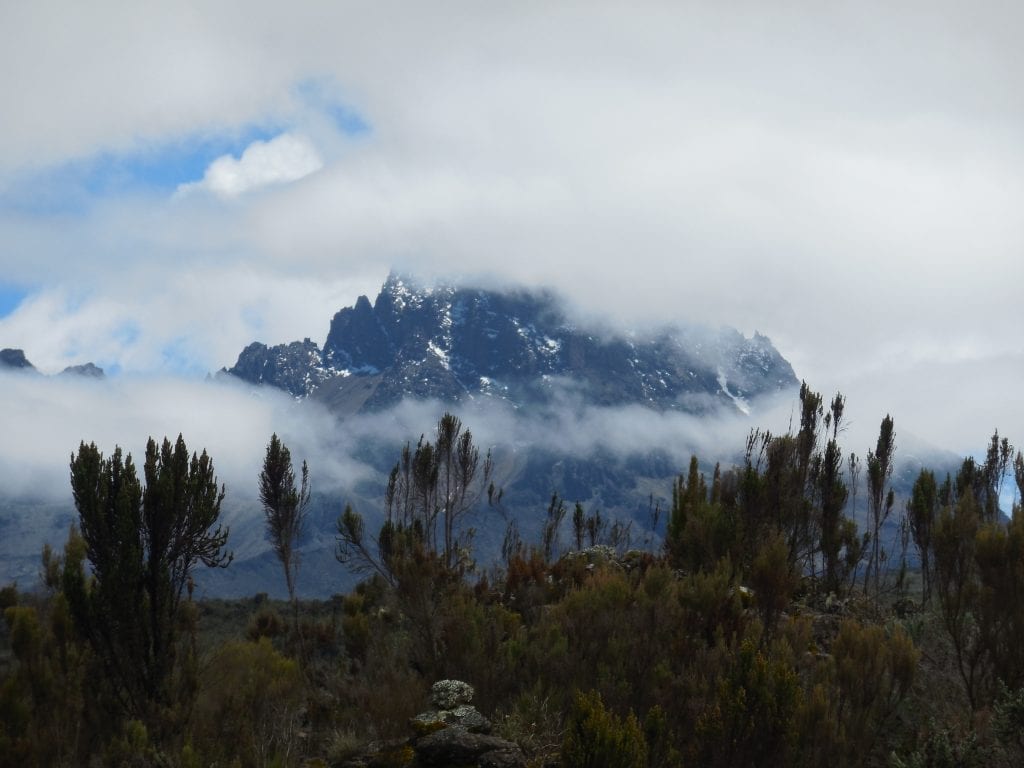
Tipping the People that Helped You Get There
One of the things I liked most about this adventure was that we were given an actual guide to tipping the guides and porters. There are different levels of porters and guides, as well as the cook and chief guide. The tipping scale gave us a range of how much to tip and luckily, we had a mathematician in our group who could figure out how much we should all put in the pot. These 33 guides and porters were so amazing, we gave them the maximum amount.
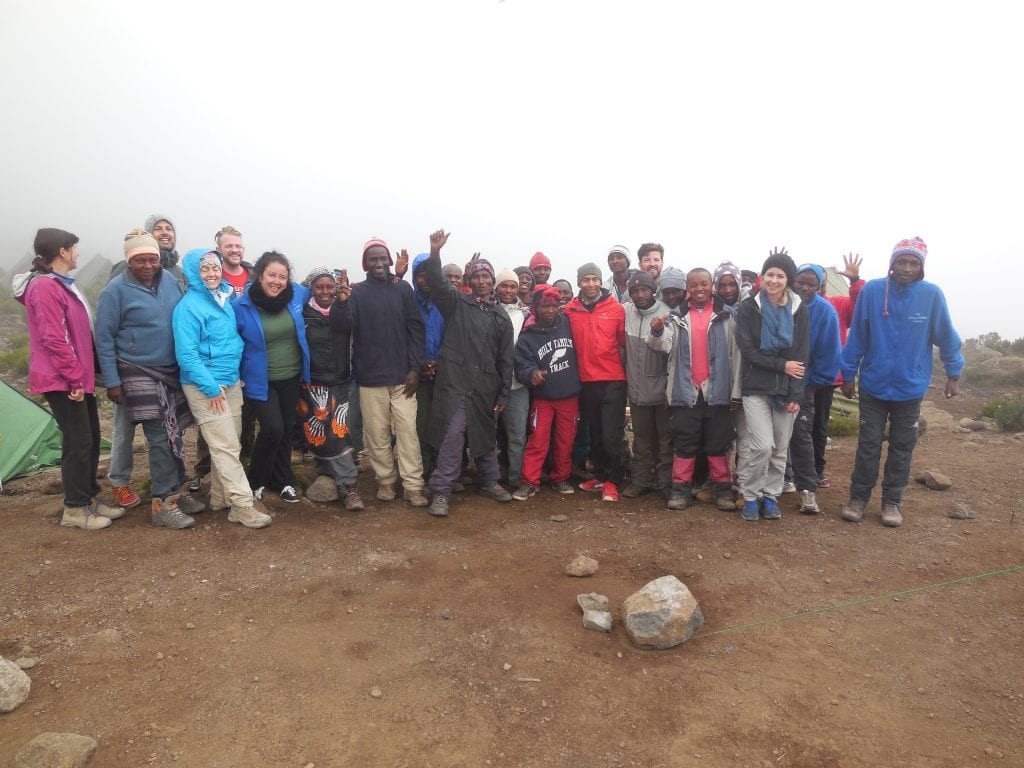
I want to include a word about over-tipping. Over-tipping is not beneficial to those who receive it or to climbers who come after you. It instills unrealistic expectations in the guides and porters, and disappointment when the group after you doesn’t over-tip. Please stick to the guidelines supplied by the tour company.
Now You Know
A good tour company will provide you with all the information you need before making a decision about whether or not to book a tour and climb Kilimanjaro. It’s a serious endeavor that takes planning and preparation. Hopefully my two cents worth can help you do just that. I’d love to hear from you! Leave comments and questions below and I’ll be sure to answer them!
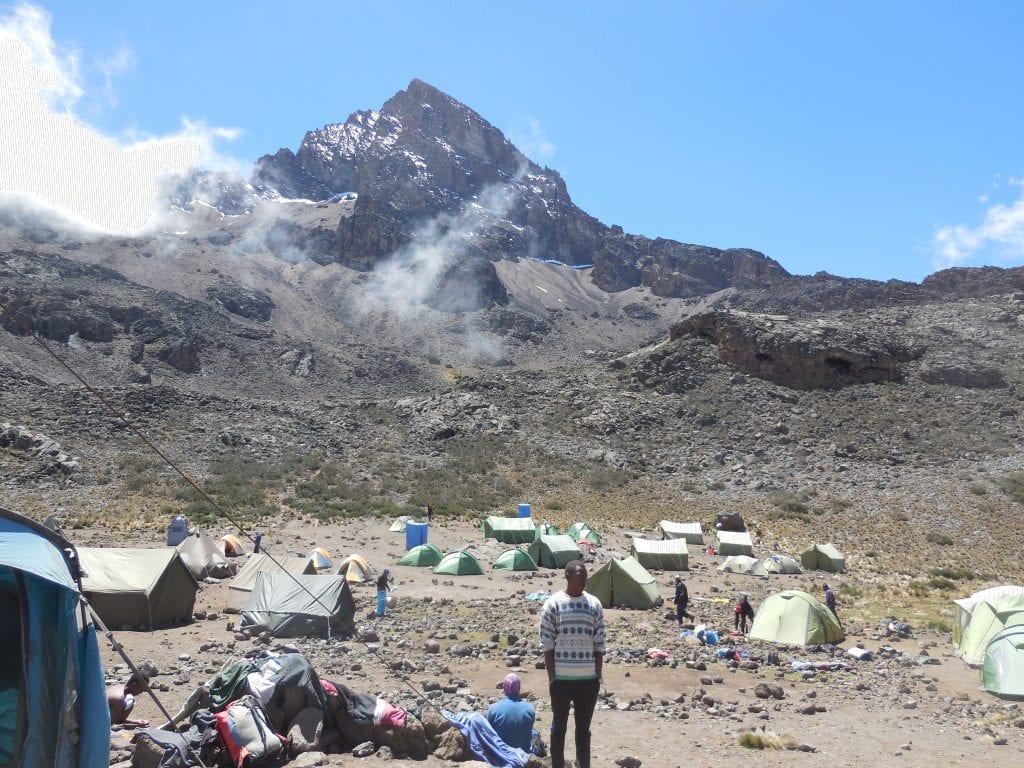

Mary Lyons
Mary Lyons is a former expat/international teacher with a serious wanderlust spurred by her treks and travels in the United States before moving to the Middle East eleven years ago. This Kentucky native-turned-Arizonan is moving back to the desert of Tucson to pursue her dream of being a business owner and travel blogger. She’s also looking forward to getting back in the great outdoors where she can camp without a tent and see the stars because sleeping in a sleeping bag at her age ensures she wakes up often. You can follow Mary’s travel and trekking advice on her blog at http://feettoflight.com



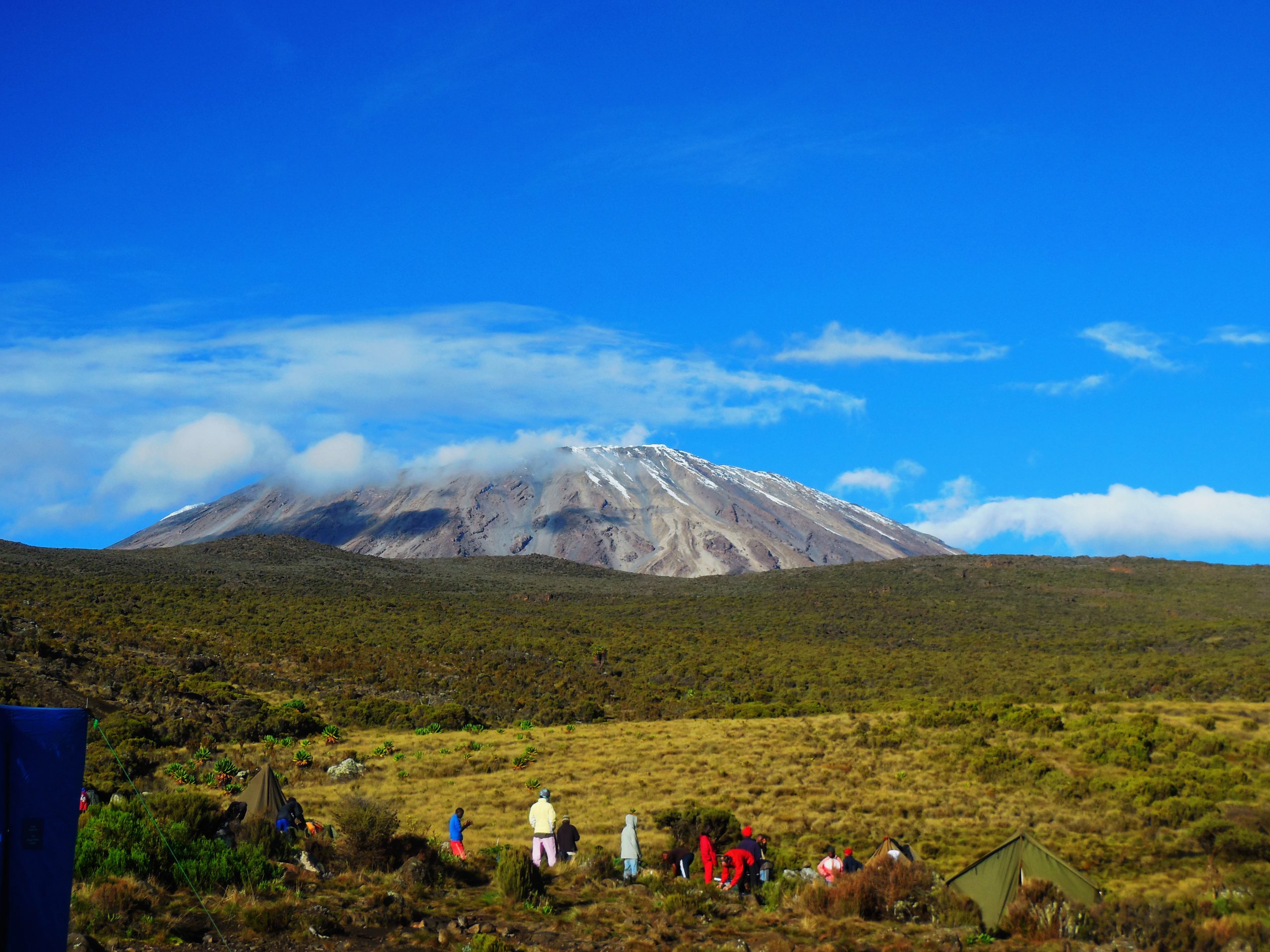










Leave a Reply